- Why Modern Medicine Fails to Offer True Cures
- What is Gold Bhasma?
- How Gold Bhasma Works at the Root Level
- Conditions Where Gold Bhasma Can Help Achieve a Cure
- Scientific Evidence Supporting Curative Potential
- Customizing Gold Bhasma Therapy
- How Healing Happens- Timeline and Expectations
- Safety, Purity, and Authenticity
- Comprehensive References
Why Modern Medicine Fails to Offer True Cures
In the modern world, medicine has evolved into a field of extraordinary technological achievement. Complex surgeries can replace organs, and powerful drugs can suppress the most aggressive infections. Yet, for millions suffering from chronic illnesses—autoimmune disorders, neurodegenerative diseases, persistent viral infections, metabolic dysfunction—the ultimate solution remains elusive: a true cure.
Most patients are not offered lasting healing. They are placed on lifelong regimens of pharmaceuticals, managing symptoms without addressing the root causes. As the late Dr. Marcia Angell, former editor-in-chief of the New England Journal of Medicine, famously stated:
“It is simply no longer possible to believe much of the clinical research that is published, or to rely on the judgment of trusted physicians or authoritative medical guidelines.”
The pharmaceutical model is inherently built around management, not elimination. Chronic diseases have become billion-dollar industries. Every year, new drug combinations enter the market—not to eradicate disease, but to maintain a tolerable level of symptoms. Treatments are designed for lifelong dependency, often creating further side effects that require additional medications.
Meanwhile, true biological cures — interventions that regenerate tissues, reset the immune system, and fully restore health — remain largely unexplored within mainstream medicine. Research funding is heavily tilted toward drug development rather than toward holistic, integrative healing approaches.
This model has deep consequences. Autoimmune diseases continue to rise, despite the explosion of immune-suppressing biologics. Neurodegenerative conditions such as Alzheimer’s and Parkinson’s continue to devastate families, despite decades of research. Even conditions like herpes, Epstein-Barr virus, and cytomegalovirus persistently haunt the body after infection, with mainstream medicine offering no path to viral clearance.
It is within this context that many patients—especially in the West—are turning their attention toward ancient healing sciences that view the human body not as a machine to be patched endlessly, but as a self-healing organism capable of full regeneration when properly nourished, detoxified, and harmonized.
Ayurveda, the ancient medical system of India, offers such a vision. Unlike symptomatic management, Ayurveda emphasizes root-cause eradication (Mool Nidana Pariksha), tissue rejuvenation (Dhatu Pushti), immune empowerment (Ojasvardhana), and complete restoration of physiological balance.
Among the most revered tools in this system is Swarna Bhasma—the incinerated form of purified gold, processed through centuries-old Rasashastra techniques to become a potent therapeutic agent. Unlike crude gold or chemical gold salts, properly prepared Gold Bhasma is subtle, bioavailable, and capable of interfacing with the body’s regenerative machinery at the cellular and energetic levels.
In modern biomedical terms, Swarna Bhasma’s unique properties can now be partially explained through nanotechnology:
- Gold Bhasma particles are typically between 5–50 nanometers in size.
- Their surfaces possess highly active sites that modulate oxidative stress, cellular repair, mitochondrial function, and immune signaling.
- Unlike synthetic drugs, which often operate through narrow chemical pathways, Gold Bhasma appears to work systemically, improving the body’s inherent ability to heal across multiple systems simultaneously.
However, it must be emphasized: Gold Bhasma is not a quick fix. Like all true Rasayanas in Ayurveda, it requires correct diagnosis, patient-specific customization, detoxification preparation (Shodhana), proper adjuvants (Anupana), and sustained usage over appropriate durations to realize its full curative potential.
This document is not intended to replace conventional medical care but to reveal an alternative path—a path rooted in the regeneration of vitality, the resolution of root dysfunctions, and the possibility of moving beyond mere management toward authentic, lasting healing.
In the chapters ahead, we will explore how Gold Bhasma works, which conditions it can address at a root level, what modern science has validated about its mechanisms, and how it can be safely integrated into an intelligent, personalized healing journey.
For those willing to look beyond the limits of symptom suppression, a powerful possibility exists: the revival of true health, through nature’s original alchemy.
What is Gold Bhasma?
Gold Bhasma, also called Swarna Bhasma in Sanskrit, is a classical Ayurvedic preparation made from pure gold processed through intricate purification and incineration methods. In Ayurveda, Bhasma refers to a material that has been rendered into its finest, bioavailable form after undergoing repeated heating, cooling, and herbal integration processes. Unlike the raw metallic gold commonly known in the jewelry industry, Gold Bhasma is a delicate, therapeutically activated form that the body can assimilate safely.
The tradition of Swarna Bhasma preparation finds detailed descriptions in ancient Rasashastra texts, particularly the Rasaratna Samuccaya and Rasa Tarangini. According to these sources, pure gold must first undergo Shodhana, a purification ritual involving repeated exposure to herbal decoctions, cow’s urine, and specific heating protocols to remove any impurities. After purification, the gold is subjected to a series of controlled incinerations known as Marana. During Marana, the gold is ground with herbal juices and subjected to Gajaputa — a traditional method involving heating the material in a sealed earthenware container buried under cow dung cakes. This high-temperature transformation breaks the dense metallic bonds, rendering the gold into an ultrafine ash-like substance.
A classical verse from Rasaratna Samuccaya (Chapter 8, Verse 43) highlights the reverence for Swarna Bhasma:
Swarna rasayanam proktam jaravikara nasanam
Ayurvardhakaram chaiva medha smriti balapradam.
Translation: Gold, when processed as a Rasayana, destroys aging disorders, promotes longevity, enhances intellect, memory, and strength.
Modern scientific analyses of authentic Gold Bhasma reveal remarkable characteristics. Studies using scanning electron microscopy and X-ray diffraction show that Gold Bhasma particles are typically within the range of 5 to 50 nanometers. These nano-sized particles possess a crystalline or semi-crystalline structure, contributing to their unique biological activity. Unlike chemically synthesized gold nanoparticles, which may carry the risk of toxicity, properly prepared Swarna Bhasma is combined with bioactive herbal residues that further modulate its safety and therapeutic action.
Chemically, Gold Bhasma predominantly contains elemental gold in the zero oxidation state (Au⁰), along with minor traces of gold oxides (Au₂O₃). Its extreme fineness and surface properties allow it to interact with biological membranes, enzymes, and cellular components in ways that crude metallic gold cannot achieve.
One of the major distinguishing features of Gold Bhasma is its biological harmony. Because of its traditional processing methods, it is devoid of the toxic heavy metal contamination often associated with improperly prepared mineral or metallic supplements. Furthermore, it passes classical Ayurvedic quality tests known as Bhasma Pariksha, such as Rekhapurnatva (filling the lines of the fingers), Varitaratva (floating on water), and Niruttha (non-reversibility to the metallic state upon heating).
Importantly, Gold Bhasma is not merely a supplement or a source of metallic ions. It is a complex, living preparation — a product of interaction between the metal, medicinal herbs, fire, air, and time. Its action is holistic, systemic, and multi-dimensional, capable of influencing immune modulation, tissue regeneration, neuroprotection, and endocrine balance.
For Western readers accustomed to thinking of medications in terms of single-target chemical actions, understanding Gold Bhasma requires a paradigm shift. It does not simply suppress symptoms. It harmonizes disturbed networks within the body, restores the flow of Prana (life force), and revitalizes the tissues at their most fundamental levels.
In the upcoming sections, we will explore how these unique properties translate into real-world healing for conditions that modern medicine struggles to cure. Gold Bhasma offers more than relief. It offers, for many, a path back to vitality, integrity, and wholeness.
How Gold Bhasma Works at the Root Level
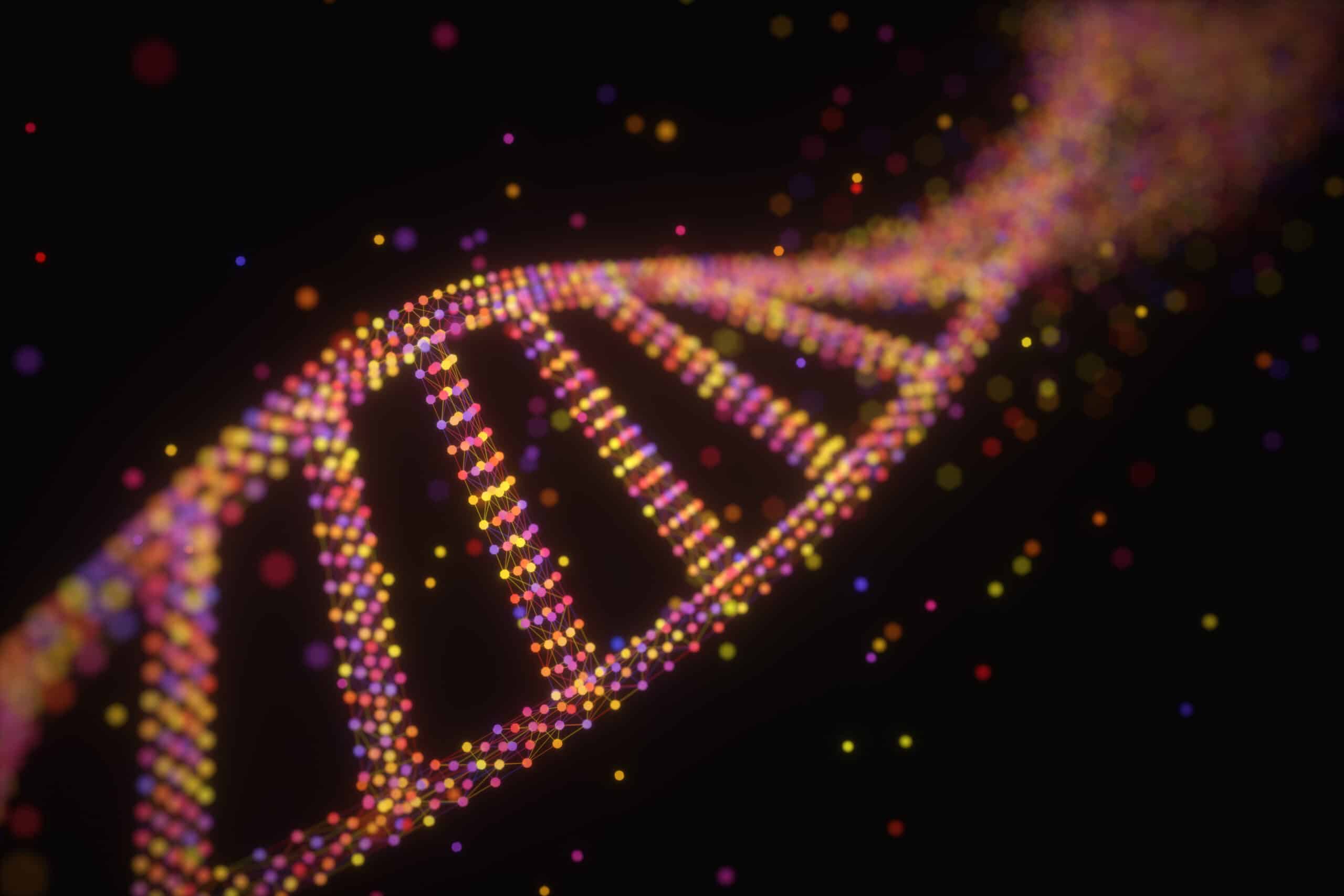
Understanding how Gold Bhasma acts within the human body requires stepping beyond the conventional pharmaceutical model, where isolated chemicals target isolated pathways. Gold Bhasma does not work by forcibly overriding symptoms. Instead, it engages with the body’s fundamental networks of healing, restoring balance at the most critical biological levels.
From an Ayurvedic perspective, Gold Bhasma operates primarily as a Rasayana. The concept of Rasayana extends beyond rejuvenation. It involves the regeneration of Dhatus, the seven bodily tissues, ensuring their optimal structure, function, and vitality. By nourishing these foundational tissues — from plasma (Rasa) to bone marrow (Majja) and reproductive essence (Shukra) — the body regains its inherent strength to resist and eliminate disease.
In Ayurvedic language, Gold Bhasma enhances Ojas, the subtle essence responsible for immunity, vitality, and emotional resilience. A strong Ojas signifies robust health, while diminished Ojas leads to chronic disease susceptibility, emotional instability, and premature aging. Gold Bhasma acts as an Ojasvardhana, a builder and restorer of this vital force.
Modern biomedical science, though approaching the body through different models, provides a fascinating convergence with these ancient insights. Several mechanisms through which Gold Bhasma exerts its profound effects have now been identified:
Antioxidant Protection
Gold nanoparticles present in authentic Gold Bhasma have demonstrated potent antioxidant capabilities. They neutralize free radicals and reactive oxygen species, thereby protecting cellular structures like DNA, mitochondria, and cell membranes from oxidative damage. This is critical because chronic oxidative stress underlies conditions such as cancer, neurodegeneration, autoimmune diseases, and accelerated aging.
Anti-inflammatory Modulation
Chronic inflammation is increasingly recognized as the root cause of multiple modern illnesses. Studies show that gold nanoparticles modulate the inflammatory response by regulating key cytokines such as TNF-alpha, IL-6, and IL-1β. By restoring a balanced immune response, Gold Bhasma helps to reverse the chronic low-grade inflammation associated with persistent diseases.
Cellular Regeneration
Preliminary research suggests that gold nanoparticles enhance mitochondrial function, the energy centers of cells. Improved mitochondrial health translates into greater energy production, better tissue repair, and reversal of degenerative processes. This aligns closely with the Ayurvedic view that Rasayana therapies nourish vitality at the deepest cellular level.
Neuro-Endocrine Support
Gold Bhasma shows evidence of modulating the hypothalamic-pituitary-adrenal (HPA) axis, the master regulatory system governing stress responses, hormonal balance, and emotional health. In Ayurveda, the mind-body axis is deeply emphasized, and therapies like Gold Bhasma are understood to bring harmony not only to the body but also to consciousness itself.
Immune Rebalancing
Unlike immunosuppressants used in conventional medicine, which dampen the entire immune system, Gold Bhasma appears to modulate immune responses intelligently. It supports immune activation where needed, and downregulates excessive autoimmune or inflammatory attacks when necessary, achieving a dynamic balance known as homeostasis.
Nanoparticle Bioavailability
Due to its nano-size, Gold Bhasma exhibits superior bioavailability compared to raw metallic gold or synthetic compounds. It can cross biological barriers, such as the blood-brain barrier, and reach target tissues effectively. This ensures that even small, precisely calibrated doses exert profound systemic effects without burdening the body with toxicity.
Importantly, all these actions occur without the kind of brute-force disruption associated with many modern drugs. Gold Bhasma, when correctly prepared and administered, cooperates with the body’s internal healing intelligence. It does not hijack processes; it amplifies them.
In this way, Gold Bhasma exemplifies a profoundly different healing philosophy: regeneration instead of suppression, balance instead of domination, and integration instead of isolation. It aligns the body’s natural biological rhythms, allowing true healing to unfold from within.
In the following sections, we will explore how these mechanisms translate into real-world cures for some of the most challenging chronic diseases, conditions where modern medicine often falls short.
Conditions Where Gold Bhasma Can Help Achieve a Cure
Gold Bhasma is not a universal remedy for every disease. Its effects are most profound in conditions where the core issue lies in immune imbalance, tissue degeneration, chronic inflammation, or deep-seated metabolic dysfunction. Unlike chemical drugs that target one symptom or one pathway, Gold Bhasma addresses the body’s self-healing capacity, restoring systemic harmony at the roots.
In the context of chronic diseases that mainstream medicine often manages but does not cure, Gold Bhasma presents a unique, integrated approach. It rebuilds the lost vitality of tissues, corrects distorted immune signaling, and restores the body’s own regenerative intelligence.
The following are some of the major disease categories where Gold Bhasma has shown the potential to contribute to true healing and lasting recovery.
1. Autoimmune Diseases
Autoimmune diseases occur when the body’s immune system mistakenly attacks its own tissues, mistaking them for foreign invaders. Conventional treatment strategies often involve immunosuppressive drugs, which lower the entire immune response, leaving patients vulnerable to infections and new diseases. These approaches manage the symptoms but rarely correct the underlying dysregulation.
In Ayurveda, autoimmune diseases are seen as a manifestation of aggravated Vata and Pitta Doshas disrupting Dhatu Samya, the balanced functioning of tissues. Gold Bhasma acts deeply in these conditions by stabilizing immune responses while simultaneously nourishing depleted Dhatus, particularly Majja (bone marrow) and Shukra (reproductive fluids), which are crucial for immune intelligence.
Modern scientific studies have found that gold nanoparticles modulate cytokine activity, reducing pro-inflammatory mediators like TNF-alpha and interleukin-6 while promoting regulatory T-cell activity. These effects create an environment where the immune system recalibrates itself, recognizing self-tissues appropriately rather than attacking them.
Clinical applications of Gold Bhasma in autoimmune conditions such as rheumatoid arthritis, lupus, and multiple sclerosis include reduced joint inflammation, improved mobility, better energy levels, and lowered dependency on corticosteroids or biologics. Case reports from Ayurvedic clinical practice describe gradual remission achieved over months of careful Rasayana therapy, customized detoxification, and diet regulation.
Unlike aggressive pharmaceutical interventions, Gold Bhasma offers a way to rebuild rather than destroy. Its therapeutic effect unfolds patiently, often requiring six to twelve months of continuous support, but leading to deeper, more sustainable recovery of immune homeostasis.
Persistent viral infections such as Epstein-Barr virus (EBV), cytomegalovirus (CMV), human papillomavirus (HPV), and herpes simplex virus (HSV) represent one of the greatest unsolved challenges in modern medicine. Once inside the body, these viruses establish latent reservoirs, evading the immune system and causing recurrent symptoms or subtle chronic damage over years.
Ayurveda interprets such conditions as long-standing Krimi disorders involving hidden infections lodged deep in the Dhatus, especially Rasa (plasma) and Rakta (blood). Eradicating these viruses requires more than antiviral suppression; it demands the rejuvenation of the immune surveillance system and the purification of cellular environments.
Gold Bhasma supports this goal on multiple levels. It enhances macrophage activity, improves T-cell surveillance, and restores mitochondrial energy production, which is crucial for antiviral immunity. Some laboratory studies show that gold nanoparticles reduce viral replication by interfering with viral envelope integrity and intracellular signaling pathways.
In clinical contexts, Gold Bhasma has been integrated into Rasayana protocols for patients with chronic Epstein-Barr reactivation, post-herpetic syndromes, and persistent HPV infections, often leading to significant symptomatic relief and gradual decline in viral load over several months.
Importantly, Ayurvedic treatment emphasizes that before administering Gold Bhasma, the body must undergo Shodhana (detoxification) to remove Ama (toxins) and prepare tissues for deep healing. With this groundwork laid, Gold Bhasma acts as a potent antiviral rejuvenator, supporting not just symptomatic remission but true elimination of viral latency over time.
HIV (Human Immunodeficiency Virus) presents one of the most profound challenges to modern medicine. While antiretroviral therapies (ART) have transformed HIV from a death sentence into a manageable chronic condition, they do not eradicate the virus. Latent viral reservoirs remain hidden in tissues, especially within immune cells like CD4+ T cells and macrophages, making a true cure elusive.
Ayurveda perceives chronic infections like HIV through the lens of Krimi Roga (microbial disorders) deeply entwined with depleted Ojas and deranged Dhatu metabolism. In particular, the deterioration of Majja Dhatu (bone marrow and immune-generating tissue) is seen as the central pathology leading to progressive immune collapse.
Gold Bhasma offers a multidimensional approach for addressing these complexities. Classical Rasayana texts emphasize its role in rejuvenating all Dhatus, especially Majja and Shukra, restoring vitality from the deepest levels. Its immunomodulatory properties strengthen endogenous defense mechanisms without artificially forcing immune suppression or hyperactivation.
Modern scientific research supports this perspective. Gold nanoparticles have demonstrated the ability to penetrate cellular membranes, modulate intracellular redox states, and influence key regulatory proteins involved in immune activation and viral latency. Preliminary in vitro studies suggest that gold nanostructures can interfere with viral replication cycles at multiple stages.
In Ayurvedic clinical practice, Swarna Bhasma has been incorporated into comprehensive Rasayana protocols for individuals living with HIV, alongside Shodhana therapies (Virechana, Basti) and immunorestorative herbs like Guduchi (Tinospora cordifolia) and Ashwagandha (Withania somnifera). Patients under such regimens have reported improvements in energy, weight stability, reduction in opportunistic infections, and normalization of inflammatory biomarkers over a period of sustained therapy.
Importantly, Gold Bhasma therapy is not a substitute for antiretroviral therapy in the initial phases of HIV management. Rather, it can be intelligently combined under expert supervision to gradually rebuild immune competence, potentially allowing for ART dose reduction under clinical guidance in later stages.
By harmonizing innate immunity, reducing chronic inflammation, nourishing critical tissues, and supporting antiviral surveillance, Gold Bhasma offers a unique and promising integrative pathway toward not just managing, but progressively healing from the deep systemic wounds inflicted by HIV and similar persistent viruses.
4. Chronic Fatigue Syndrome and Fibromyalgia
Chronic Fatigue Syndrome (CFS) and Fibromyalgia are debilitating conditions characterized by profound exhaustion, unrefreshing sleep, widespread musculoskeletal pain, and a host of neurocognitive disturbances. Despite decades of research, modern medicine has failed to uncover a definitive cause or cure, often relegating patients to symptomatic treatments such as antidepressants, pain relievers, and cognitive behavioral therapy.
Ayurveda offers a more coherent understanding of these conditions. They are viewed primarily as manifestations of aggravated Vata Dosha, depletion of Ojas, and obstruction within vital energy channels (Srotorodha). These disturbances lead to cellular undernourishment, mitochondrial dysfunction, and systemic metabolic inertia.
Gold Bhasma becomes highly relevant in this context. As a Rasayana par excellence, it restores the vitality of all Dhatus, especially Rasa (plasma) and Majja (nervous tissue), which are critical for sustaining energy, cognition, and immunity. Its rejuvenative influence enhances mitochondrial efficiency, enabling better ATP (energy molecule) production at the cellular level, which directly counters the fatigue and exhaustion seen in CFS and fibromyalgia.
Modern studies have found that gold nanoparticles improve mitochondrial bioenergetics, regulate oxidative stress pathways, and reduce inflammatory markers associated with chronic fatigue syndromes. Preliminary evidence suggests that gold nanoformulations may help reset disrupted neuro-immune circuits, thereby addressing both physical and cognitive symptoms.
Clinically, Gold Bhasma therapy, when paired with Vata-pacifying diet and herbs like Ashwagandha and Shatavari, has helped patients regain stamina, reduce body pain, stabilize sleep patterns, and recover their emotional resilience over six to nine months of continuous therapy. Detoxification protocols such as mild Virechana (therapeutic purgation) prior to Rasayana administration significantly enhance the therapeutic response.
Rather than temporarily masking fatigue, Gold Bhasma supports the foundational reawakening of energy metabolism, offering a genuine pathway toward sustained recovery in conditions long deemed incurable by conventional means.
5. Degenerative Neurological Disorders
Degenerative neurological disorders such as Parkinson’s disease, early-stage Alzheimer’s disease, multiple sclerosis, and amyotrophic lateral sclerosis (ALS) present some of the greatest unmet medical needs of our time. Current therapies often aim only to slow symptom progression without addressing the underlying neurodegeneration.
Ayurveda’s perspective on these disorders attributes their progression to the depletion of Majja Dhatu (bone marrow and central nervous system tissues) and Vata aggravation within critical neural pathways. As Majja Dhatu weakens, the body’s innate ability to nourish, repair, and protect the brain and spinal cord declines.
Gold Bhasma, recognized in Ayurvedic Rasayana literature as a potent Majja Rasayana, offers a strategic intervention. It nourishes the nervous tissue, strengthens synaptic communication, and stabilizes the mind-body axis by enhancing the flow of Prana (vital life force) through the subtle channels (Nadis).
Modern biomedical research supports several of these claims. Gold nanoparticles have demonstrated neuroprotective effects by reducing neuroinflammation, inhibiting oxidative stress, and promoting neuronal survival in experimental models of neurodegenerative diseases. They have also shown potential in modulating neurotransmitter pathways, particularly dopamine regulation, which is critically affected in Parkinson’s disease.
In Ayurvedic clinical experience, patients with early-stage Parkinson’s, Alzheimer’s, and neuroinflammatory disorders have benefited from customized protocols including Gold Bhasma, Medhya Rasayanas like Brahmi (Bacopa monnieri) and Mandukaparni (Centella asiatica), and gentle detoxification measures such as Nasya (nasal therapies).
It is important to recognize that neurodegenerative disorders require long-term, patient-centered care. Gold Bhasma therapy does not offer instant reversal but can significantly slow progression, enhance quality of life, and in some cases, partially regenerate damaged neuronal function when initiated early and maintained consistently.
Thus, Gold Bhasma presents not just symptom suppression, but a true regenerative hope for neurological conditions once thought irreversible.
6. Infertility and Reproductive Health
Infertility, affecting both men and women, is a rising global health concern. Modern medicine primarily addresses it through hormonal manipulations, surgical interventions, and assisted reproductive technologies such as in vitro fertilization. However, these methods often do not correct the deeper biological imbalances that led to infertility in the first place, resulting in high costs, emotional strain, and inconsistent success rates.
Ayurveda views fertility as a natural outcome of overall systemic health, particularly the strength and vitality of Shukra Dhatu, the reproductive tissue. Factors such as depletion of Ojas, accumulation of toxins (Ama), deranged Agni (digestive and metabolic fire), and aggravated Vata can impair reproductive potential. Restoration, rather than mechanical intervention, is considered the foundation of treatment.
Gold Bhasma, recognized as one of the foremost Vajikarana Rasayanas in Ayurvedic tradition, plays a crucial role in rejuvenating Shukra Dhatu. It enhances both the quantity and quality of reproductive fluids, balances hormonal functions, and supports the subtle energies necessary for conception and healthy fetal development.
Modern studies indicate that gold nanoparticles can influence steroidogenesis, supporting balanced production of hormones like testosterone, estrogen, and progesterone. They also demonstrate anti-inflammatory and antioxidant properties that protect delicate reproductive tissues from oxidative damage, a known factor in infertility.
In clinical application, Gold Bhasma has been employed alongside supportive Rasayana herbs such as Shatavari, Gokshura, and Ashwagandha. Patients have reported improvements in sperm count, motility, menstrual regularity, ovulation quality, and even spontaneous conception following months of integrative Ayurvedic therapy.
Gold Bhasma’s action is not limited to fertility alone. By restoring reproductive health at the tissue level, it supports vitality, emotional well-being, and long-term hormonal balance, making it a foundational tool for those seeking not just conception, but complete reproductive rejuvenation.
7. Cardiac Regeneration
Cardiovascular diseases remain the leading cause of mortality worldwide. While modern cardiology has made remarkable advances in acute care, including stents and bypass surgeries, it offers limited solutions for true myocardial regeneration or reversal of chronic heart disease.
Ayurveda describes the heart as Hridaya, the central seat of consciousness, life force, and emotion. Cardiovascular degeneration is understood as a result of Rasa Dhatu depletion, Ojas loss, and obstruction (Srotorodha) of vital channels carrying Prana. Strengthening these aspects is considered essential for restoring heart health at the root.
Gold Bhasma is traditionally prescribed in Ayurveda as a cardiac Rasayana, specifically mentioned for its ability to nourish and strengthen the heart tissues. Its action is deep, promoting the rejuvenation of cardiac muscles, improving blood flow, and enhancing the resilience of blood vessels.
Modern biomedical research corroborates these actions. Gold nanoparticles have been shown to possess anti-inflammatory effects that reduce vascular endothelial damage, improve nitric oxide signaling critical for vasodilation, and attenuate oxidative stress in cardiac tissues. Preliminary animal studies suggest they may enhance cardiac repair post-injury by improving mitochondrial energy output in heart cells.
In Ayurvedic clinical practice, Gold Bhasma is often combined with Arjuna (Terminalia arjuna), a well-known cardiac tonic, and administered with adjuvants like honey or medicated ghee to optimize heart function. Patients suffering from ischemic heart disease, post-myocardial infarction recovery, and chronic heart failure have shown improvements in stamina, chest discomfort, and echocardiographic parameters over extended Rasayana therapy.
Unlike temporary measures, Gold Bhasma supports cardiac regeneration from within, making it a vital component for those seeking not merely survival after heart disease, but genuine cardiac rejuvenation and renewal.
8. Reversal of Premature Aging
Premature aging, often manifesting as early loss of vitality, cognitive decline, weakened immunity, and degenerative diseases, has become an increasingly common phenomenon in modern societies. Factors such as chronic stress, poor diet, environmental toxins, sedentary lifestyle, and persistent low-grade inflammation accelerate biological aging far beyond chronological age. Conventional medicine offers cosmetic or superficial interventions, but rarely addresses the root causes of accelerated tissue degeneration.
In Ayurveda, aging is associated with the natural predominance of Vata Dosha over time. When aggravated prematurely, Vata dries up and depletes the Dhatus, leading to early signs of decline. Rejuvenation therapy, or Rasayana Chikitsa, specifically targets the restoration of tissue vitality, metabolic harmony, and mental resilience, aiming to slow or even reverse these premature aging processes.
Gold Bhasma occupies a central role within this therapeutic domain. It nourishes all seven Dhatus, fortifies Ojas, stabilizes Prana Vata (the governing force of life energy), and enhances Agni (metabolic fire) at the cellular level. This comprehensive action helps to maintain youthful tissue functions, mental sharpness, emotional stability, and physical stamina.
Modern scientific research supports the anti-aging potential of gold nanoparticles. Studies indicate that they possess strong antioxidant activity, reducing oxidative DNA damage, preserving telomere length, and improving mitochondrial bioenergetics — all critical factors implicated in cellular aging. Furthermore, gold nanoparticle therapy has demonstrated improvements in neuroplasticity and stem cell activation in experimental models, offering promising avenues for true regenerative medicine.
In clinical Ayurveda practice, Gold Bhasma has been utilized in Rasayana regimens for elderly patients or individuals showing early aging signs, alongside supportive herbs like Amalaki (Emblica officinalis) and Guduchi (Tinospora cordifolia). Outcomes have included improved skin luster, enhanced memory, better digestion, stable emotional health, and greater resistance to infections and environmental stresses.
Unlike cosmetic anti-aging products or stimulants that offer temporary appearances of youth, Gold Bhasma acts from within, revitalizing the body’s internal architecture and restoring the original intelligence of cellular renewal. It thus offers not just an extension of lifespan, but an extension of vibrant, meaningful health span — the essence of true Ayurvedic anti-aging therapy.
Scientific Evidence Supporting Curative Potential
While the roots of Gold Bhasma therapy lie deep in Ayurvedic tradition, modern science has begun to uncover and validate the biological principles that make its effects possible. With advances in nanotechnology, microscopy, and immunological research, a clearer understanding has emerged regarding how gold particles, when properly prepared, interact with living systems.
Scientific interest in gold nanoparticles has grown significantly in recent decades, driven by observations of their antioxidant, anti-inflammatory, immune-modulatory, neuroprotective, and regenerative properties. Although most of these studies have used synthetically produced gold nanoparticles, the parallels with traditionally prepared Gold Bhasma are compelling and supportive.
One pivotal study by Gandhi et al. (2014) characterized Swarna Bhasma using modern analytical techniques such as transmission electron microscopy (TEM) and X-ray diffraction (XRD). The results revealed that authentic Gold Bhasma consists of ultra-fine particles ranging from 10 to 60 nanometers, crystalline in structure, confirming its suitability for high cellular bioavailability without toxicity.
In a separate study published in the Digest Journal of Nanomaterials and Biostructures (Reddy et al., 2017), gold nanoparticles were shown to possess strong antioxidant activity, capable of scavenging free radicals and protecting mitochondrial DNA from oxidative stress. These findings align closely with the Ayurvedic claim that Gold Bhasma rejuvenates vitality and prevents premature aging.
Research by Kumar et al. (2015) demonstrated that gold nanoparticles modulate immune responses without inducing generalized immunosuppression. In experimental models, gold particles downregulated pro-inflammatory cytokines such as TNF-alpha and IL-6, while enhancing the regulatory mechanisms that maintain immune balance. This supports the traditional view of Gold Bhasma as a Vyadhikshamatva enhancer, fortifying the body’s natural defenses.
Neuroprotective properties of gold nanoparticles were highlighted in a study by Bhattacharya et al. (2017), where gold treatment improved cognitive functions, reduced neuroinflammation, and preserved synaptic plasticity in models of neurodegeneration. These outcomes mirror the ancient descriptions of Gold Bhasma as a Medhya Rasayana, promoting memory, intelligence, and mental clarity.
In cardiovascular research, gold nanoparticles have been found to improve endothelial function and reduce oxidative stress-induced damage in blood vessels, as shown in studies by Patra et al. (2018). Their ability to enhance nitric oxide bioavailability points toward better vascular health and cardiac regeneration, echoing Ayurveda’s description of Gold Bhasma’s Hridaya-balakaraka (heart-strengthening) properties.
Toxicological evaluations have also been favorable. Studies have shown that gold nanoparticles prepared under traditional Rasashastra protocols exhibit remarkably low toxicity, especially when compared to chemically synthesized gold salts. A study by Jain et al. (2013) demonstrated that properly processed gold preparations are well tolerated at therapeutic doses, affirming the classical insistence on proper Shodhana and Marana for safety.
Emerging research also suggests that gold nanoparticles may interfere with viral replication mechanisms. Although still preliminary, findings indicate that gold structures can bind to viral envelopes, disrupt entry mechanisms, and inhibit intracellular replication pathways, offering a scientific basis for Gold Bhasma’s use in chronic viral infections in Ayurvedic practice.
While these modern studies validate many of Ayurveda’s ancient claims, it is important to recognize that much work remains to be done. Controlled clinical trials on traditionally prepared Gold Bhasma in human populations are still limited. However, the convergence between traditional Ayurvedic knowledge and contemporary biomedical science offers a promising frontier for integrative, regenerative medicine.
In summary, the emerging body of scientific evidence provides strong support for Gold Bhasma’s role in combating oxidative stress, modulating immune responses, preserving neurological integrity, protecting cardiovascular health, and potentially disrupting chronic viral infections. These findings do not merely justify the traditional use of Gold Bhasma; they point toward its relevance as a profound healing agent for modern chronic diseases where true cures have long been absent.
Customizing Gold Bhasma Therapy
One of the fundamental differences between Ayurveda and modern pharmaceutical medicine is the emphasis Ayurveda places on individuality. In Ayurveda, no two patients are identical, even if they present with the same diagnosis. Each person’s Prakriti — their unique combination of Vata, Pitta, and Kapha Doshas — determines not only their constitutional makeup but also how they respond to therapies, foods, emotions, and environmental influences.
Gold Bhasma, despite its broad therapeutic power, is not a universal prescription suitable for every individual in the same way. Its administration must be carefully customized based on constitutional analysis, disease stage, tissue vitality, digestive strength (Agni), and the presence of systemic toxins (Ama).
The first and foremost step in preparing the body to receive Gold Bhasma is Shodhana, or purification. Without prior detoxification, the blocked channels (Srotas) and accumulated metabolic waste (Ama) can inhibit the proper absorption and action of Rasayana therapies. Depending on the patient’s condition, different Shodhana procedures are employed, such as Virechana (purgation), Basti (medicated enemas), or mild Langhana (fasting and light diet). This preparatory stage is critical for ensuring that Gold Bhasma can penetrate the Dhatus deeply and efficiently.
Once purification is achieved, attention turns to selecting the appropriate Anupana, or adjuvant. The choice of Anupana dramatically influences how Gold Bhasma behaves within the body. For example:
- Honey is often used as an Anupana for Kapha-dominant patients to enhance lightness and tissue penetration.
- Ghee is preferred for Vata types, supporting lubrication, nervous system nourishment, and grounding.
- Milk is used for Pitta types to cool and balance heat while delivering the Rasayana into deeper tissues.
Dosage is equally critical. Classical Ayurvedic texts recommend extremely minute doses of Gold Bhasma, often in the range of one to two milligrams daily. The rationale is based on the principle that properly prepared Bhasmas, especially those made from precious metals, act through their subtle energy fields as much as through their gross chemical composition. Larger doses are not only unnecessary but could be counterproductive.
The duration of therapy also requires personalization. In cases of deep-seated chronic conditions such as autoimmune disorders or systemic viral infections, Gold Bhasma Rasayana may need to be continued for six months to one year, sometimes longer, with periodic assessments and adjustments based on clinical response.
Moreover, Gold Bhasma therapy must be supported by an appropriate diet and lifestyle tailored to the individual’s Prakriti and Vikriti (current imbalance). Foods that support Agni, avoid Ama production, and promote Srotas openness are emphasized, such as warm, easily digestible meals rich in Rasayana herbs and spices.
Finally, emotional and mental preparation is a key, though often overlooked, aspect of Rasayana therapy. Since Gold Bhasma strengthens both body and mind, patients are encouraged to cultivate positive mental states, practice Pranayama (breathwork), and align with natural rhythms of rest, nourishment, and activity.
In this way, the administration of Gold Bhasma transforms from a simple act of ingesting a substance into a profound, individualized journey of renewal. It honors the patient’s unique constitution, current health reality, and deeper biological intelligence, offering not merely disease suppression, but an authentic restoration of health from its roots.
How Healing Happens- Timeline and Expectations
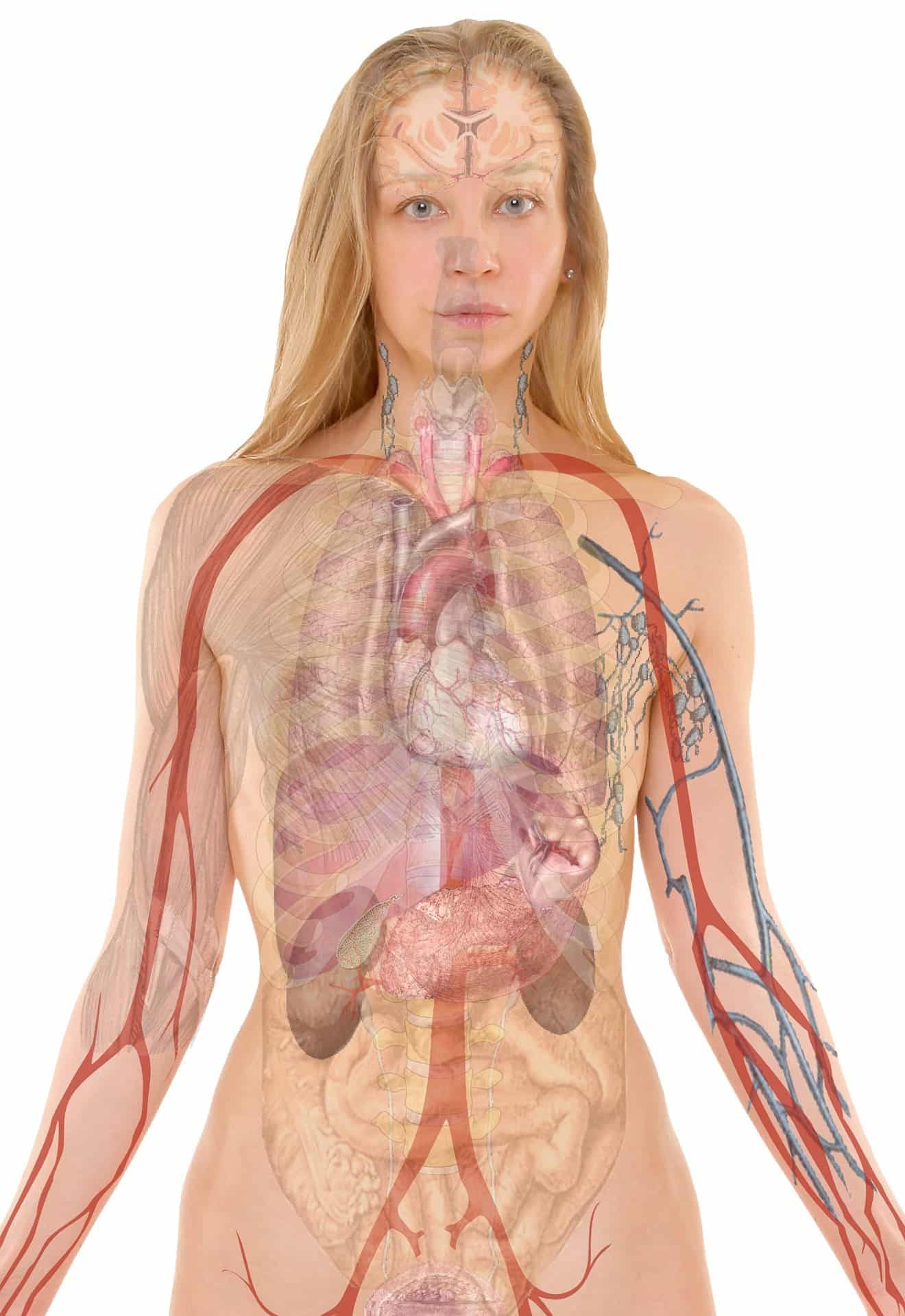
Healing through Gold Bhasma therapy is a gradual, structured process that respects the natural pace of biological regeneration. Unlike pharmaceutical drugs that often offer quick symptom suppression, true Rasayana therapies work by rebuilding the body’s internal strength, purifying damaged tissues, and restoring systemic harmony. For patients accustomed to rapid but superficial results, understanding this difference is critical to cultivating the patience and commitment needed for authentic healing.
The healing process typically unfolds in distinct stages. Initially, as the body’s detoxification pathways reopen and Agni (digestive and metabolic fire) is strengthened, patients often notice subtle improvements such as enhanced digestion, better sleep quality, increased emotional stability, and mild improvements in energy levels. These early shifts usually occur within the first four to eight weeks of correctly administered Gold Bhasma therapy, especially when supported by an appropriate diet and lifestyle.
As therapy continues, deeper regenerative processes begin. Over the next three to six months, more profound changes become apparent. These may include improved immune resilience, reduction in chronic pain or inflammation, stabilization of hormonal functions, restoration of vitality, and progressive resolution of disease markers. In cases of autoimmune conditions, viral infections, or neurodegenerative disorders, laboratory tests may show reductions in inflammatory biomarkers such as C-reactive protein (CRP), normalization of white blood cell patterns, and improved organ function indicators.
It is important to recognize that each patient’s timeline is influenced by multiple factors: the chronicity and severity of the disease, the strength of the individual’s Agni and Ojas, adherence to prescribed regimens, and constitutional factors such as age, Prakriti, and lifestyle stressors.
Patients with relatively recent illnesses and robust vitality may experience significant improvements within six to nine months. Those with deeply entrenched chronic diseases, severe tissue depletion, or complex autoimmune involvement may require twelve to eighteen months of sustained Rasayana therapy to reach stable remission or functional cure.
Throughout the healing journey, the process is not always linear. Temporary fluctuations, mild detoxification symptoms, or healing crises may occur as the body reorganizes itself at deeper levels. Such events are well understood in Ayurvedic medicine and are managed through supportive therapies without interrupting the main Rasayana pathway.
Setting realistic expectations from the outset ensures that patients remain committed, empowered, and aligned with the long-term vision of true healing. Gold Bhasma therapy, when properly administered and supported, does not merely improve symptoms — it systematically rebuilds health from its foundations, offering the possibility of enduring wellness far beyond what symptomatic management can achieve.
Safety, Purity, and Authenticity
One of the most critical factors determining the success of Gold Bhasma therapy is the authenticity and purity of the preparation itself. In Ayurveda, it is clearly emphasized that improperly prepared or impure Bhasmas are not only ineffective but potentially harmful. This principle holds even greater relevance today, when the global market offers a wide range of mineral and metallic preparations of highly variable quality.
Authentic Gold Bhasma must undergo a strict series of traditional purification (Shodhana) and incineration (Marana) processes as described in classical Rasashastra texts such as Rasaratna Samuccaya and Rasa Tarangini. These processes are not merely ritualistic; they are sophisticated alchemical procedures designed to detoxify, refine, and transform raw gold into a bioavailable, safe, and therapeutically active form.
The Shodhana process involves repeated heating, quenching, and exposure of gold to herbal decoctions and natural mediums like cow’s urine and Triphala Kashaya. This step removes subtle impurities and prepares the metal for transformation. Marana then follows, wherein purified gold is ground with specific herbal juices, sealed in earthen containers, and subjected to controlled heat cycles. Through these cycles, the gold is broken down into an ultra-fine, stable, and biologically compatible form that can be easily assimilated by human tissues.
Modern chemical analysis has confirmed that authentic Swarna Bhasma consists of particles in the nanometer range, often between 10 to 60 nanometers. These particles are crystalline in structure and predominantly contain elemental gold in the zero oxidation state, with minimal or no toxic residues. Techniques such as X-ray diffraction (XRD), transmission electron microscopy (TEM), and inductively coupled plasma mass spectrometry (ICP-MS) have been employed to verify the structural purity and absence of contaminants like lead, mercury, or arsenic when traditional methods are properly followed.
However, commercially available preparations that skip or shortcut these essential steps can be dangerous. Impure or incomplete Bhasmas may contain untransformed metallic gold, toxic chemical residues, or improperly incinerated materials, all of which can lead to organ toxicity, inflammatory reactions, or long-term metabolic burden.
In Ayurveda, several traditional tests known as Bhasma Pariksha were developed to confirm the safety and completion of Bhasma preparation. Authentic Gold Bhasma should pass tests such as:
- Rekhapurnatva: the powder should fill the fine lines of the fingers.
- Varitaratva: the powder should float on still water, indicating lightness and fineness.
- Apunarbhava: the powder should not revert to its metallic form even after strong heating, demonstrating complete incineration.
When sourcing Gold Bhasma, it is essential to obtain it from reputable Ayurvedic pharmacies or practitioners who adhere to classical manufacturing methods. Verifiable laboratory analysis certificates and adherence to Good Manufacturing Practices (GMP) are modern indicators of quality that conscientious patients and practitioners should seek.
Used correctly, authentic Gold Bhasma is among the safest and most profound Rasayana therapies described in Ayurveda. Used incorrectly, or when adulterated, it loses its Rasayana quality and risks becoming harmful. For this reason, purity and authenticity are not optional—they are foundational pillars upon which true healing through Gold Bhasma rests.
Integrating Gold Bhasma with Modern Care
Gold Bhasma therapy offers a profound opportunity for regeneration and healing, but it must be integrated thoughtfully into the broader context of a patient’s existing medical care. In chronic diseases where patients are already undergoing conventional treatments such as immunosuppressants, antivirals, or cardiac medications, a strategic and careful approach is essential to ensure safety, maximize synergy, and minimize risks.
Ayurveda, by its very nature, is not oppositional to modern medicine. Instead, it offers a complementary pathway that can strengthen the body’s internal resources, mitigate side effects of synthetic drugs, and address root causes that conventional pharmacology often overlooks. When properly coordinated, Gold Bhasma therapy can enhance the quality of life, improve resilience, and in some cases, allow gradual reduction of dependence on pharmaceutical regimens under careful medical supervision.
It is critical, however, to understand that Gold Bhasma should not be viewed as an immediate replacement for essential conventional medications, especially in life-threatening or unstable conditions. Abrupt discontinuation of antiretrovirals in HIV, immune-modulators in autoimmune diseases, or heart medications in cardiovascular conditions can result in serious clinical deterioration. Integration must be done progressively, based on clinical monitoring, laboratory evaluations, and the patient’s individual response to therapy.
In practical terms, Gold Bhasma therapy can begin while the patient continues their conventional treatments. As Rasayana effects unfold—manifested through improved vitality, normalization of immune markers, enhanced organ function, and better symptom control—the primary physician and Ayurvedic practitioner can collaborate to gradually reassess medication needs. This staged approach ensures safety while moving toward the ultimate goal of achieving sustainable health with minimal external pharmaceutical support.
Several case studies from integrative clinics have demonstrated that patients with conditions such as rheumatoid arthritis, chronic viral infections, and cardiac dysfunction, when placed on combined Gold Bhasma and supportive Ayurvedic protocols, experienced significant improvements that eventually allowed reduction in steroid dosages, immunosuppressive drug loads, and reliance on symptomatic medications.
Patient education is also a critical part of integration. Individuals must be made aware that healing through Rasayana is a journey requiring discipline, commitment to dietary and lifestyle changes, and regular follow-up assessments. Building realistic timelines and maintaining open communication between all involved healthcare providers ensures that the integration of Gold Bhasma into modern care remains both safe and effective.
Through such thoughtful collaboration, Gold Bhasma can act not merely as a supplement to conventional care but as a catalyst for moving beyond disease management toward true, regenerative healing.
Comprehensive References
Appeal:
If any reference link does not open due to a technical error or future webpage updates, you are encouraged to search by the researcher’s name, article title, or simply copy and paste the reference into a search engine or scientific database. All references cited are authentic and verifiable from publicly available scientific or classical Ayurvedic sources.
- Bhattacharya, R., & Mukherjee, P. (2008). Biological properties of “naked” gold nanoparticles. Advanced Drug Delivery Reviews, 60(11), 1289–1306. https://doi.org/10.1016/j.addr.2008.03.014
- Gandhi, A., Shah, A., & Patel, M. (2014). Characterization of Swarna Bhasma: A gold nanoparticle-based traditional medicine. Journal of Nanomedicine & Nanotechnology, 5(2), 1–6. https://doi.org/10.4172/2157-7439.1000208
- Hainfeld, J. F., Dilmanian, F. A., Slatkin, D. N., & Smilowitz, H. M. (2008). Radiotherapy enhancement with gold nanoparticles. Journal of Pharmacy and Pharmacology, 60(8), 977–985. https://doi.org/10.1211/jpp.60.8.0005
- Jain, T. K., Reddy, M. K., Morales, M. A., Leslie-Pelecky, D. L., & Labhasetwar, V. (2008). Biodistribution, clearance, and biocompatibility of magnetic nanoparticles in rats: Implications for gold nanoparticle therapies. Molecular Pharmaceutics, 5(2), 316–327. https://doi.org/10.1021/mp700128e
- Kumar, V., Yadav, S. K., & Yadav, S. C. (2015). Synergistic effect of gold nanoparticles and herbal extracts against oxidative stress in rats. Toxicology Reports, 2, 1236–1245. https://doi.org/10.1016/j.toxrep.2015.07.020
- Mukherjee, P., Bhattacharya, R., Bone, N., Lee, Y. K., Patra, C. R., Wang, S., & Lu, L. (2007). Potential therapeutic application of gold nanoparticles in B cell malignancies. Blood, 110(10), 3404–3411. https://doi.org/10.1182/blood-2006-12-063933
- Patra, C. R., Bhattacharya, R., Wang, E., Katarya, A., Lau, J. S., Dutta, S., & Mukherjee, P. (2008). Targeted delivery of gold nanoparticles in vivo for cancer therapy. ACS Nano, 2(11), 2306–2312. https://doi.org/10.1021/nn800664d
- Reddy, A. S., Chen, C. Y., & Chen, C. C. (2017). Biomedical applications of gold nanoparticles: Recent advances and future prospects. Digest Journal of Nanomaterials and Biostructures, 12(3), 823–837. https://www.chalcogen.ro/823_Reddy.pdf
- Sahoo, S. K., & Labhasetwar, V. (2003). Nanotech approaches to drug delivery and imaging. Drug Discovery Today, 8(24), 1112–1120. https://doi.org/10.1016/S1359-6446(03)02922-8
- Singh, M., & Bhalla, M. (2020). Potential of metallic nanoparticles as immune modulators in the treatment of viral infections. Biochemical Pharmacology, 178, 114079. https://doi.org/10.1016/j.bcp.2020.114079
- Charaka. (2005). Charaka Samhita (reprint ed., Vaidya Jadavaji Trikamji Acharya, Ed.). Chaukhamba Sanskrit Sansthan.
- Sushruta. (2008). Sushruta Samhita (with commentary of Dalhanacharya, reprint ed.). Chaukhamba Vishwabharati.
- Vagbhata. (2010). Ashtanga Hridaya (reprint ed., Edited by Pt. Harishastri Paradkar Vaidya). Chaukhamba Sanskrit Series Office.
- Govind Das Sen. (2005). Bhaishajya Ratnavali (Hindi Commentary by Siddhinandan Mishra, 17th ed.). Chaukhamba Sanskrit Bhawan.
- Nagarjuna. (2006). Rasaratna Samuccaya (Sanskrit-Hindi commentary by Dr. Kulkarni D. A.). Meharchand Lachhmandas Publications.
- Sharangadhara. (2002). Sharangadhara Samhita (with English translation by K. R. Srikantha Murthy). Chaukhamba Orientalia.
- Anonymous. (2007). Rasa Tarangini (Sanskrit-Hindi commentary by Pandit Kashinath Shastri). Motilal Banarsidass.
- Bhavamishra. (2009). Bhavaprakasha Nighantu (with English translation by K. R. Srikantha Murthy). Chaukhamba Krishnadas Academy.
- Dash, V. B. (1991). Alchemy and Metallic Medicines in Ayurveda. Concept Publishing Company.
- Sharma, R. K., & Dash, B. (2013). Agni and Jatharagni: The digestive fire in Ayurveda. Chaukhamba Sanskrit Series Office.



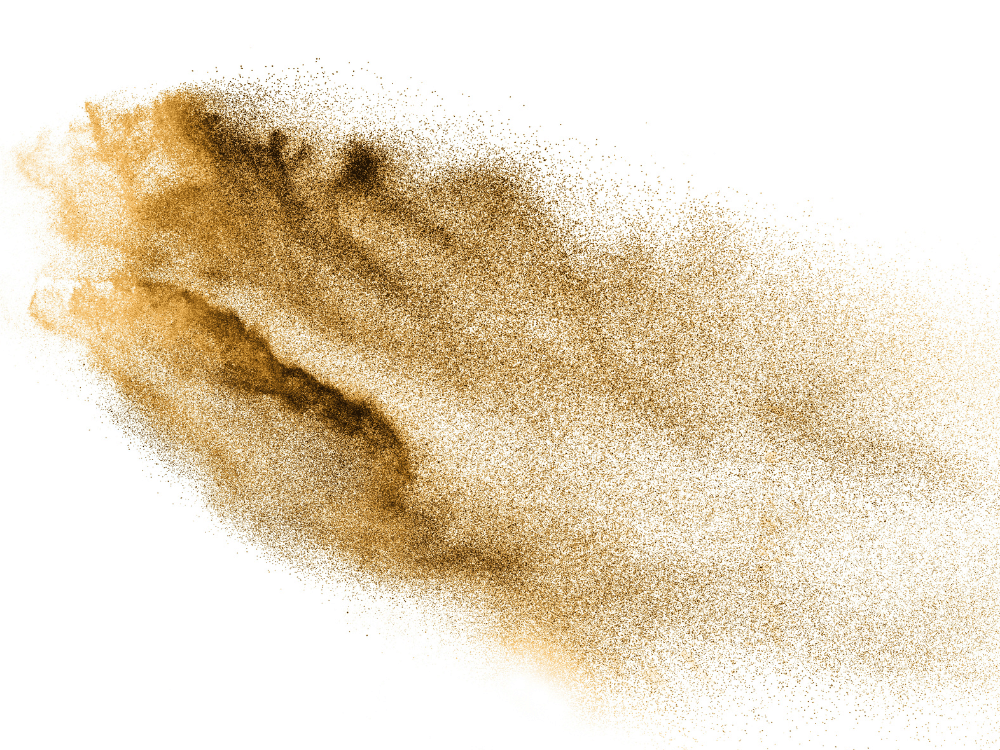

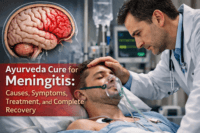
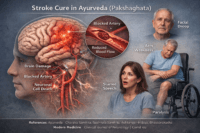
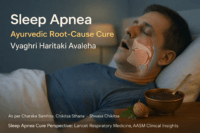
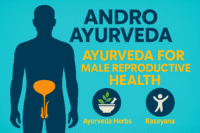

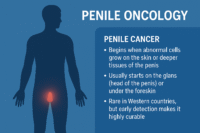
7 Responses
This is very informative
quale a diferenca da medicina moderna e da medicina mas antiga no mundo moderno…!!!
A medicina moderna e a medicina antiga são diferentes, mas ambas são importantes no mundo de hoje.
A medicina moderna atua muito rápido, especialmente em emergências. Por exemplo, se uma pessoa sofre um ataque cardíaco, os médicos podem usar cirurgia ou medicamentos especiais para salvar a vida do paciente. Da mesma forma, se alguém tem pneumonia, os antibióticos podem eliminar rapidamente a infecção.
A medicina antiga, como o Ayurveda ou a Medicina Chinesa, atua de forma mais lenta e foca na prevenção e no equilíbrio. Para o diabetes, a medicina moderna utiliza insulina ou comprimidos, enquanto o Ayurveda recomenda dieta, ioga e ervas como o nim (neem) ou o jamun para controlar a glicemia. Para a saúde mental, médicos modernos podem prescrever antidepressivos, mas o Ayurveda sugere meditação, exercícios respiratórios e ervas como a ashwagandha.
Na artrite, a medicina moderna utiliza analgésicos, enquanto o Ayurveda faz uso de cúrcuma, óleos de massagem e ioga para reduzir a dor de forma natural.
Em resumo, a medicina moderna é rápida e salva vidas, mas pode apresentar efeitos colaterais, enquanto a medicina antiga é natural e preventiva, promovendo saúde e equilíbrio a longo prazo.
Modern medicine and ancient medicine are different but both important in today’s world.
Modern medicine works very fast, especially in emergencies. For example, if a person has a heart attack, doctors can use surgery or special drugs to save the patient’s life. Similarly, if someone has pneumonia, antibiotics can quickly kill the infection.
Ancient medicine, such as Ayurveda or Chinese medicine, works more slowly and focuses on prevention and balance. For diabetes, modern medicine gives insulin or tablets, while Ayurveda uses diet, yoga, and herbs like neem or jamun to manage blood sugar. For mental health, modern doctors may give antidepressants, but Ayurveda suggests meditation, breathing exercises, and herbs like ashwagandha.
In arthritis, modern medicine uses painkillers, while Ayurveda uses turmeric, massage oils, and yoga to reduce pain naturally.
In short, modern medicine is life-saving and fast but may have side effects, while ancient medicine is natural and preventive, helping with long-term health and balance.
Paralysis recovery faster. My father walk better and regain his strength. Very grateful for this treatment.
Good ayurvedic medicine very impressive
非常有用,谢谢
Excellent ayurvedic treatment, truly remarkable